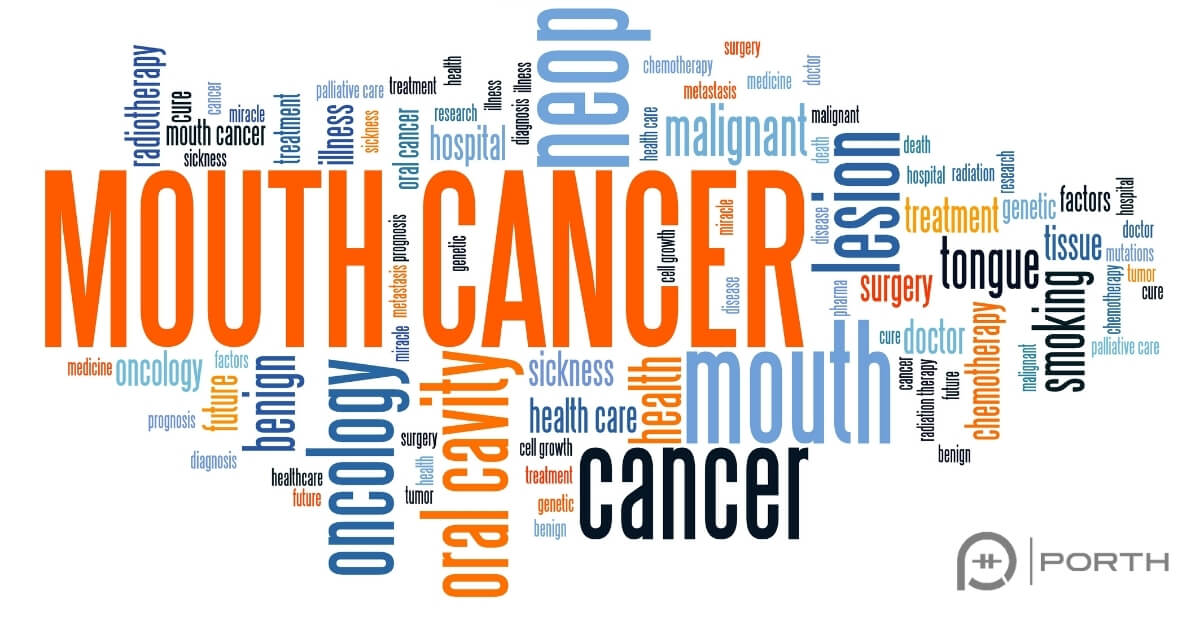April is National Oral Cancer Awareness Month. As a dentist by training, I like to take part in educating our community about this disease especially that over 51,000 individuals in the United States estimated to develop oral cancer in 2018.
What is Oral Cancer?
Surprisingly, oral cancer is more common than Hodgkin’s disease, leukemia, brain cancer and cancers of stomach. April 8-15 is designated as the Oral Head and Neck Cancer Awareness Week to raise awareness about oral cancer in public. What do we know about this deadly disease?
Causes
It’s hard to determine what causes oral cancer and it varies on an individual basis. But more often than not, oral cancer is caused by continuous smoking and use of tobacco products and alcohol, as shown in the American Dental Hygienist Association data. Those who both smoke and drink are 15 times more likely to develop oral cancer than others. Human papillomavirus (HPV) infection is also a major contributor to oral cancer. Oral Cancer Foundation highlights all factors that can help prevent head and oral cancers.
Symptoms
The American Academy of Oral Medicine notes several main symptoms to look for. Oral cancer shows itself as soreness or irritation that doesn’t heal, red or white patches, numbness, pain or bleeding in your mouth or on lips, lumps and thickening tissues, rough spots and eroded areas around your mouth. It’s accompanied by difficulty in chewing, swallowing, speaking, or moving your jaw or tongue. It can also causes changes in your bite and the way your teeth fit together when you close your mouth.
Effects
Oral cancer has become a major cause of death and disfigurement in the United States, as 8,000 people die from it each year, according to the National Cancer Institute (NCI) oral cancer data. Cancers of the mouth and upper throat or neck kill nearly one person every hour of every single day, as The American Academy of Oral Medicine reports. Their research shows that 40 percent of the people newly diagnosed with these cancers will not survive longer than five years. Many of those who do survive, suffer long-term problems, such as severe facial disfigurement or difficulties with eating and speaking.
Prevent and Detect Oral Cancer Early
We know that in its early stages, oral cancer can be treated in up to 90% of cases. That’s why it’s important to be aware of early detection – do not hesitate to contact your doctor.
Oral Cancer Self-Exam
The following is an oral cancer self-examination:
- Head and neck: look at your face and neck in a mirror. Normally, the left and right sides of the face have the same shape and are roughly symmetrical. Look for any lumps, bumps, or swellings that are only on one side of your face.
- Face: examine the skin on your face for changes in color or size, sores, moles, or growths.
- Neck: press along the sides and front of the neck for tenderness or lumps.
- Lips: pull your lower lip down and look for sores or color changes.Then, use your thumb and forefinger to feel the lip for lumps, bumps, or changes in texture. Repeat this on your upper lip.
- Cheek: examine your inner cheek for red, white, or dark patches. Put your index finger on the inside of your cheek and your thumb on the outside. Gently squeeze and roll both sides of your cheeks between your fingers to check for any lumps or areas of tenderness.
- Roof of the mouth: tilt your head back and open your mouth wide to look for any lumps and see if the color is different from usual. Touch the roof of your mouth to feel for lumps.
- Floor of the mouth and tongue: extend your tongue and look at the top surface for color and texture. Pull your tongue forward to look at both sides for any swellings or color changes. Examine the underside of the tongue by placing the tip of your tongue on the roof of your mouth. Look at the floor of your mouth and the underside of your tongue for color changes, and press your finger against the underside of your tongue to feel for any lumps or swellings.
If you find anything out of the ordinary—particularly anything that does not heal or go away in two weeks, or that has recently changed—discuss it with your oral health professional or physician.
What does orthodontics have to do with oral cancer?
As with any cancer, If oral cancer goes undetected, it spreads to other parts of the body and becomes nearly impossible to treat. The oral cancer screening (the head and neck exam) is one of the most critical and essential components of your usual dental examination – it should be routinely performed by your doctor, including your orthodontist. Every dental professional, like your dental hygienists, dentists and orthodontists, should be able to note any suspicious changes and encourage you to seek medical care.
the head and neck exam is one of the most critical and essential components of your usual dental routine – it should be routinely performed by your doctor, including your orthodontist.
Treatment without prevention is simply unsustainable.
Bill Gates
